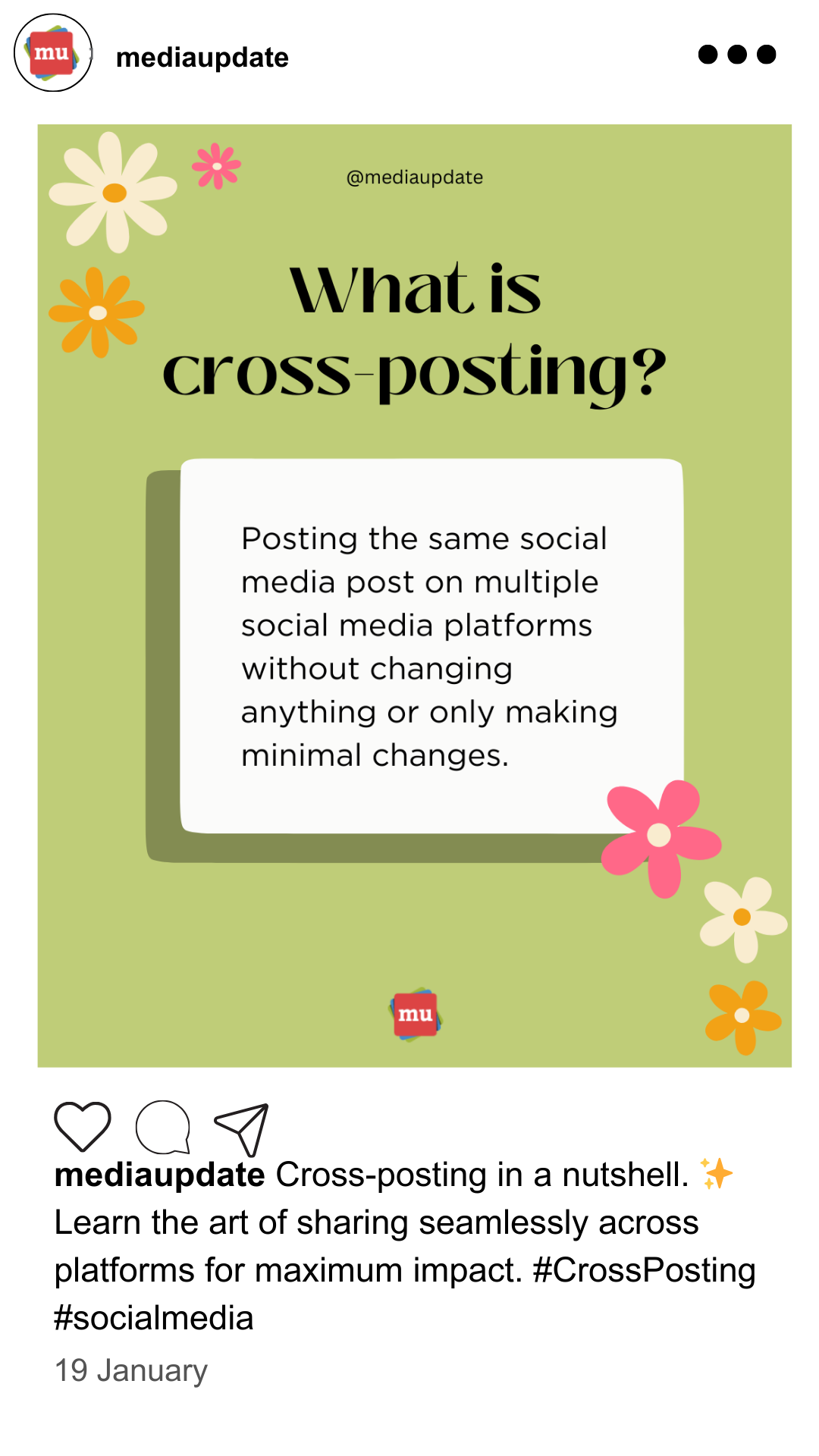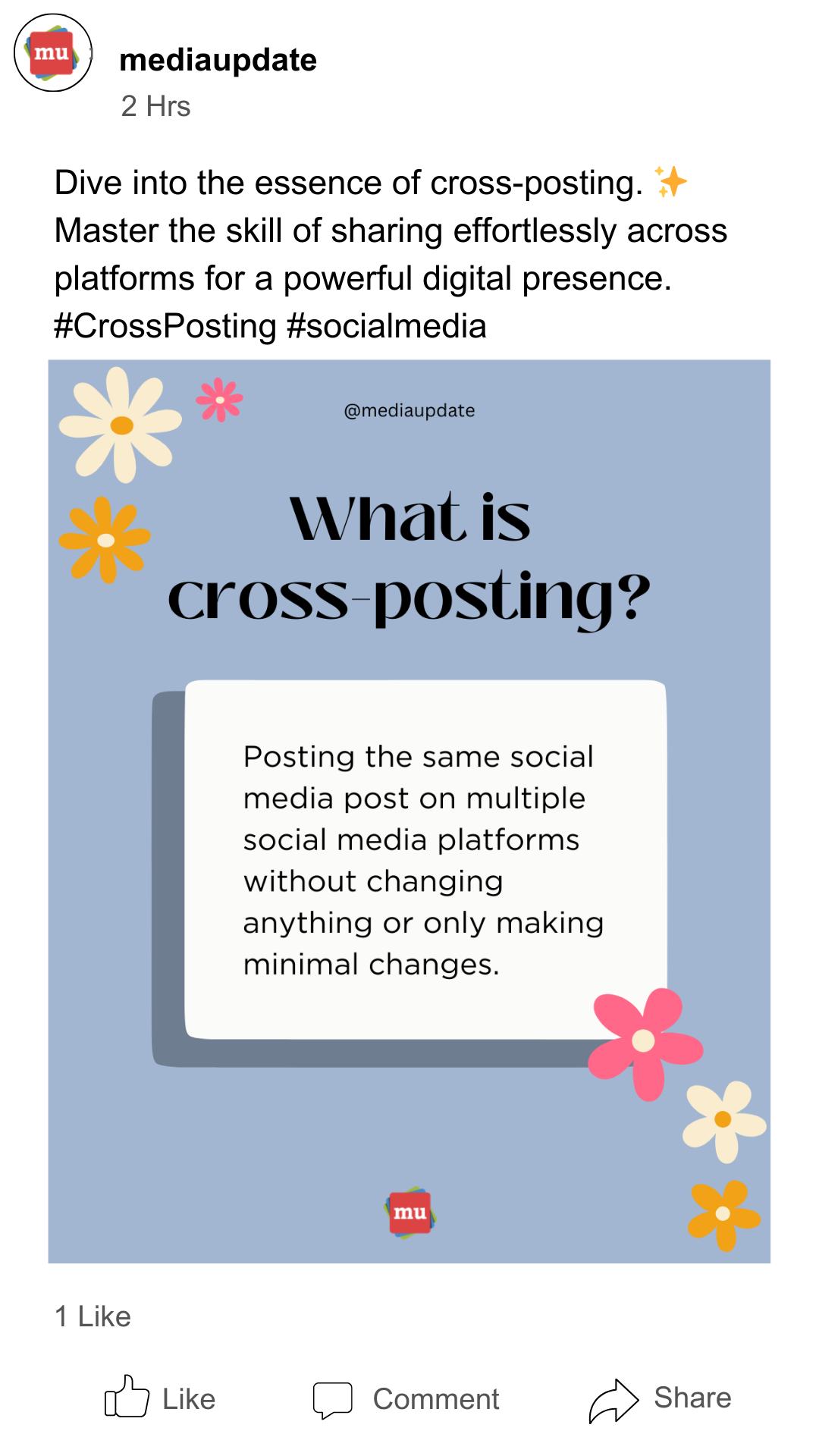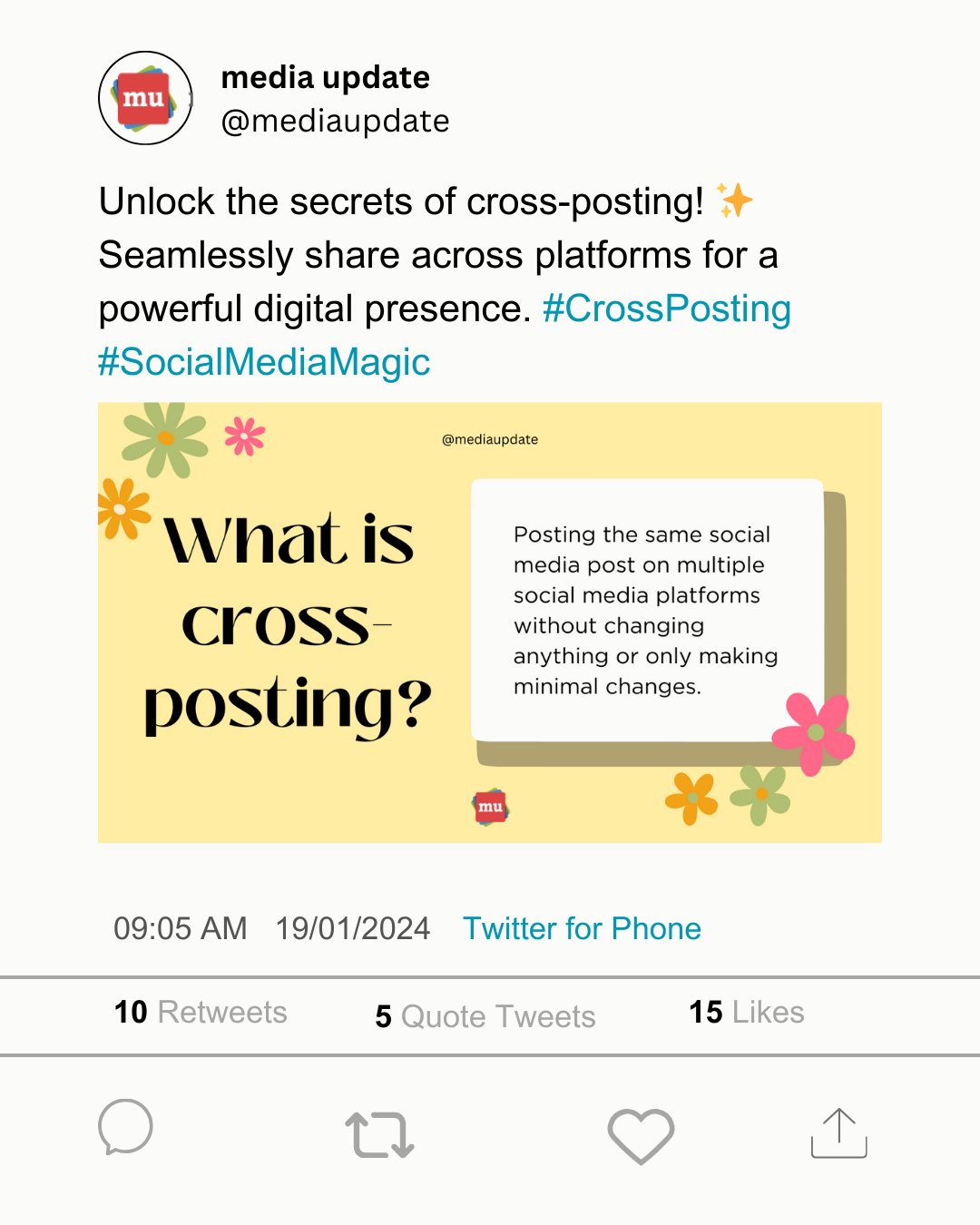Cross-posting is a big and somewhat controversial topic in the world of social media and social media management.
People usually fit into one of two camps:
In the first, you have those who believe that your brand has a specific voice and aesthetic. Regardless of the social media platform, the post needs to fit your vibe — so cross-posting is fine.
The other quite vocal camp is those who are fully and firmly against the idea. They believe that every platform is different and your posts should be different.
We, on the other hand, pitched a tent right between these two camps.
Before you get mad and tell us to pick a side …
Stop and take a breath, because Alrika Möller from media update is exploring the ins and outs of cross-posting.
What it is
When you take the same post and you post it on just about every platform that you or your brand has, you are cross-posting.
You can take the whole thing — hashtags, caption and the kitchen sink as well — and copy and paste it on everything from Instagram to LinkedIn.
Alternatively, the other form of
cross-posting is to take the image and
switch up a few things to make it slightly different. You might
change the caption or
tweak the hashtags, but within its
essence, it is the same post.
We believe that cross-posting got a bad rep. There is a method to the madness — as long as you do it the right way.
The key is to alter the post enough so that it is different for every platform, but not so much that you lose the time-saving benefit.
Let me explain!
Take the hypothetical Instagram post below. I will change it to fit every social media platform, without changing the post itself.
Instagram post

The post uses portrait dimensions as it is the most popular shape to post on social media as of right now.
The caption fits with the format and vibe that most Instagram captions have, even using an emoji.
Facebook post

Because I wanted to post the same thing on Facebook, I reworked the image by changing the background colour, and I changed the caption.
The caption says the exact same thing — just in a different way. I am also using the same hashtags, as Instagram and Facebook often have the same popular hashtags.
The changes were minimal and took two seconds, but it does make all the difference.
X / Twitter post

X uses
different image dimensions to Instagram and Facebook, so I swapped the layout and
played around with the image elements to fit the wider shape of X images.
Once again, I reworded the caption so that it feels different and fresh — while keeping the core message.
The hashtags are also different; they are based on the captions that are popular and recommended at this time.
LinkedIn post

LinkedIn uses different image dimensions to all the rest.
The image was adjusted to fit into the square that LinkedIn posts prefer.
The caption has a more professional and career-focussed undertone, so I included the hashtag '#socialmediamanagement' since the post might be helpful for people in that line of work.
Extra tips
If you want to post a video on both Instagram Reels and TikTok, take a moment to check the popular hashtags and captions on the two different apps.
Meta Business Suit makes it super easy to post the same post on both Instagram and Facebook.
However, you often have the same followers on both platforms, so there is a benefit in changing the post a little to keep people from just scrolling past.
Cross-posting is not all bad or all good — it depends on how you use it and what changes you make.
Always killing it in the social media game can sometimes feel like an impossible task. Let us know where you need a little help in the comment section below, and we will make things a little easier.
Let's start our 2024 social media off with our best foot forward! Check out our guide to Setting social media goals for 2024.